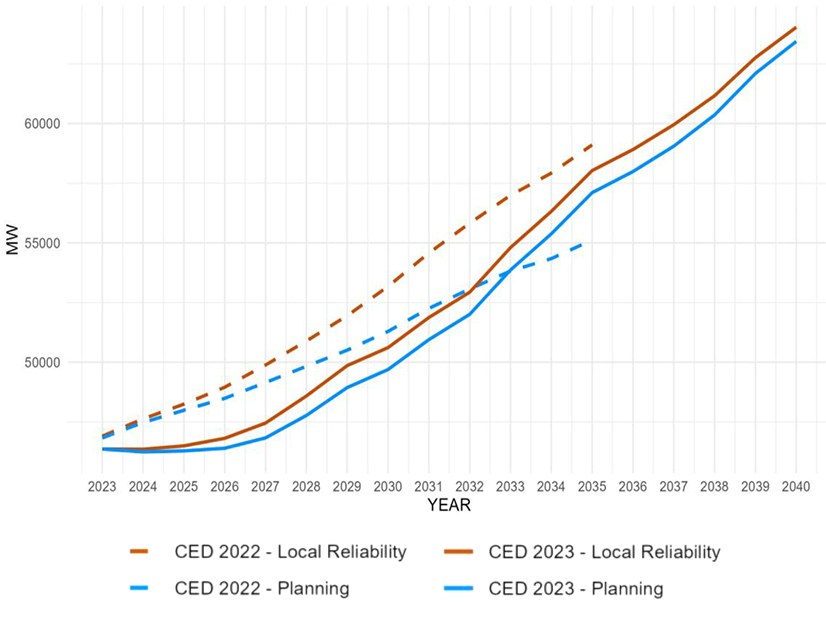
Slower anticipated growth in California’s population has prompted state regulators to downwardly revise the electricity demand forecast used for grid planning.
The reduced demand relative to a 2022 forecast is projected to continue to about 2033. But after that, the latest forecast shows a surge in demand compared to previous predictions, as the state’s potential new requirements for zero-emission appliances are expected to kick in.
The forecast is part of the California Energy Commission’s 2023 Integrated Energy Policy Report (IEPR). The proposed final IEPR will go to the commission for approval Feb. 14.
The CEC calls its California energy demand forecast “foundational” to state energy planning. The California Public Utilities Commission uses the forecast in overseeing energy procurement, while CAISO uses it in transmission planning.
Like previous forecasts, the CEC’s new projections show a steep growth in statewide electricity demand due to California’s rapid shift toward electrification of transportation and buildings.
Climate change is also expected to increase load, as heat waves are projected to become longer, hotter and more frequent, CEC said.
From the 2018 forecast to the 2022 forecast, the expected peak demand in 2030 increased by more than 5 GW.
Population Trends
In contrast, the latest forecast has revised energy demand downward compared with previous predictions — at least through about 2033.
The change is based on a statewide population growth of 0.2% a year, which is less than the previous projections of 0.4% annual growth. The slower expected population growth follows a state population decrease of about 0.5% in 2022. The population data come from the California Department of Finance.
“The slowdown in population growth can be attributed to slow in-migration and steady out-migration on top of an aging baby boomer population and declining fertility,” the report said.
Other factors that contributed to a lower load forecast are anticipated electric rates that are higher than previously predicted, and projections of greater growth in rooftop solar generation.
But after 2033, projected load starts to rise above previously predicted levels. That’s partly due to the expected impacts of zero-emission appliance rules that the California Air Resources Board (CARB) is considering.
Last year, CARB started holding workshops on the potential rules, which would apply to new natural gas-powered space and water heaters for residential and commercial buildings. If approved, the regulations are expected to become effective in 2030. (See California Considers Zero-emission Appliance Rules.)
2040 Peak Demand
The IEPR forecast shows CAISO peak demand growing by 1.8% a year and hitting 63,442 MW by 2040. CAISO’s record peak demand is 52,061 MW, set on Sept. 6, 2022. Peak demand in 2023 was 44,534 MW on Aug. 16, the ISO reported.
The energy forecast also includes projections for managed electricity sales, in which customer generation is deducted from consumption. The figures also factor in the projected impacts of energy efficiency, building electrification and transportation electrification.
Managed electricity sales are expected to grow from about 245,000 GWh in 2023 to 352,563 GWh in 2040. Solar generation is expected to hit 64,460 GWh by 2040.
CEC continually works to improve its energy demand modeling. For the 2023 forecast, CEC moved away from relying on historical data for its weather forecasts. The agency worked with Lumen Energy Strategy to incorporate global climate models into its projections.
CEC considers the impacts of regulations, policies and programs through an “additional achievable scenario” framework. Additional achievable load modifiers are applied for energy efficiency, transportation electrification and the fuel substitution that occurs with the shift to electric appliances.
The forecast includes estimates of the impacts from planned data centers, as well as load growth from increased cannabis consumption.
Port electrification is “partially accounted for,” CEC said. But electricity needed for hydrogen production is not included “because of the high uncertainty around the future of hydrogen,” the report said.